NASCAR's Clash Will be a Spectacle to See

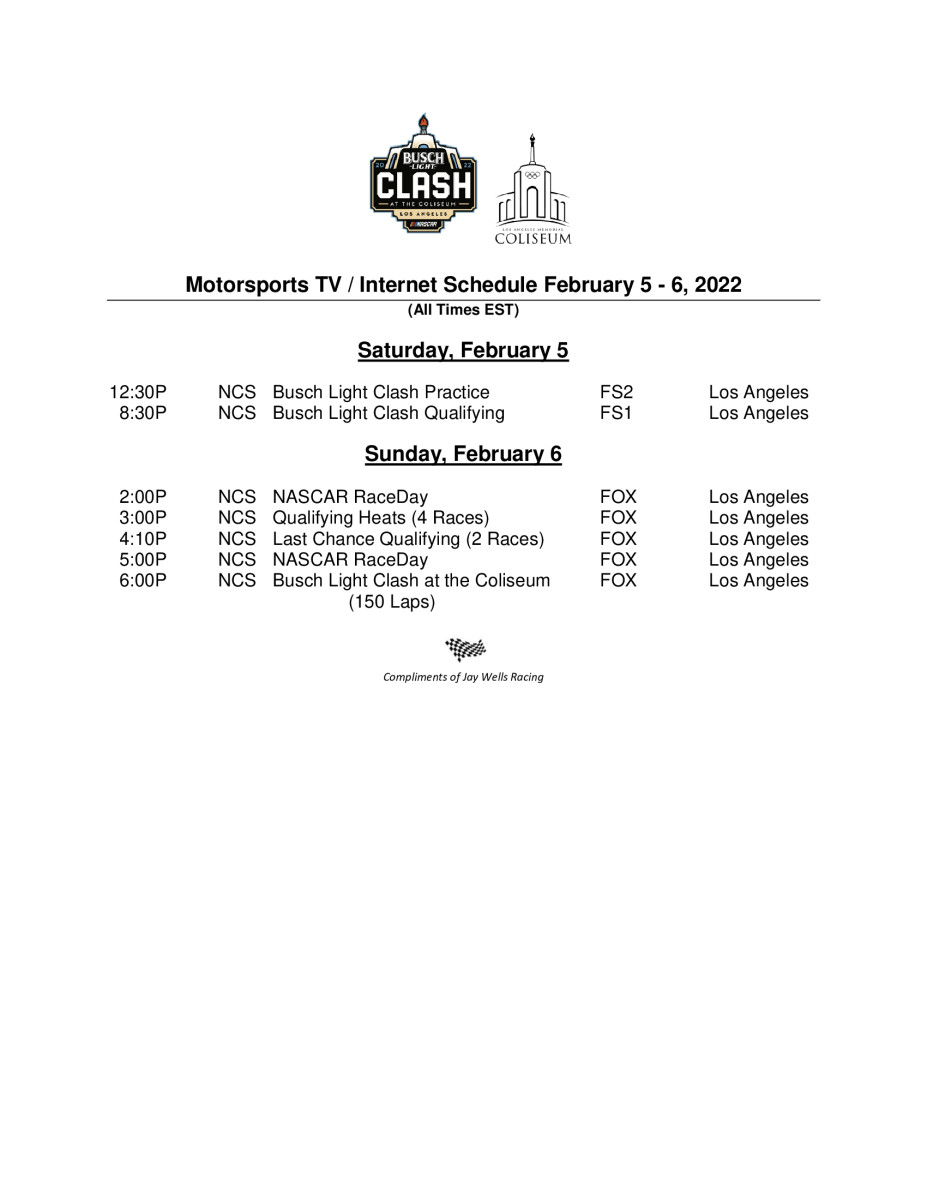
This Sunday, a football stadium in Los Angeles will host a nationally-televised sporting event complete with all the pomp and circumstances and a half-time show.
But it won’t be Super Bowl LVI. That doesn’t take place until February 13.
Instead, it will be a NASCAR race right inside the Los Angeles Memorial Coliseum.
After taking place at the legendary Daytona International Speedway for 42 years, the Busch Light Clash - NASCAR’s annual preseason exhibition race - will take place at an equally prestigious sports venue.
Except this venue has never hosted stock car racing before.
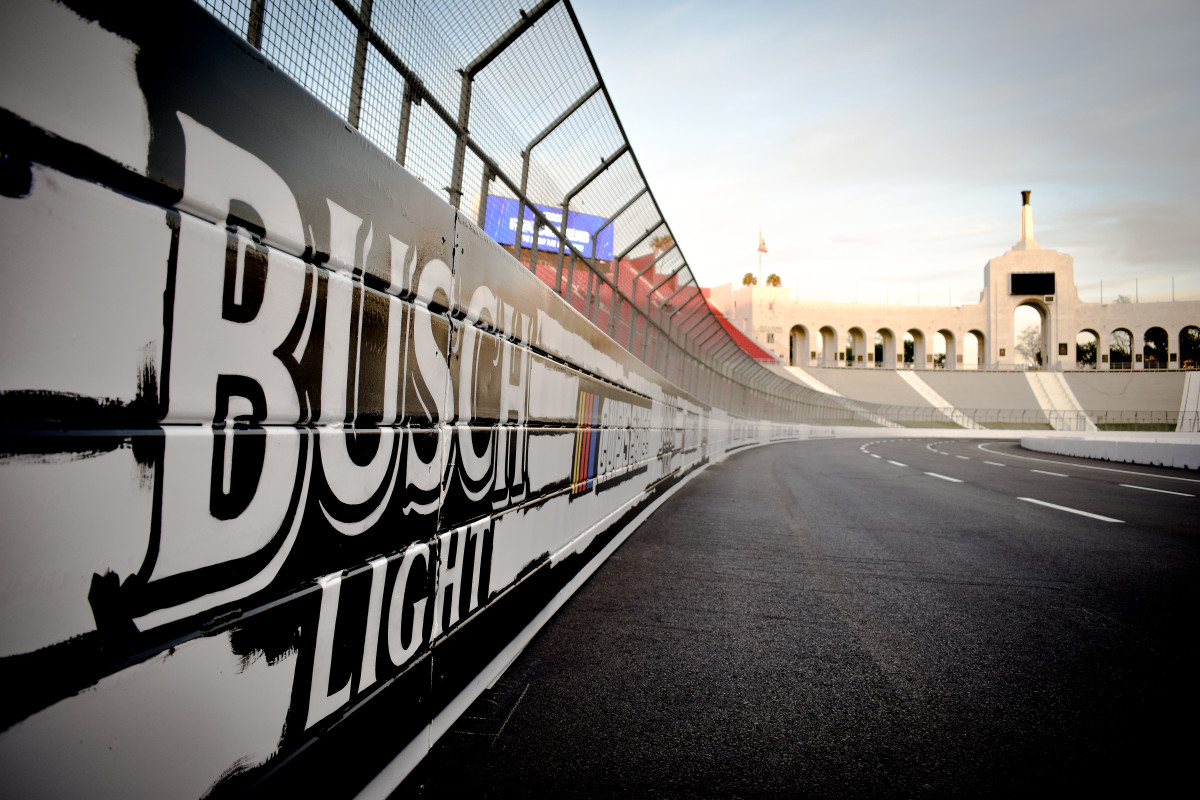
Sure, The Coliseum has hosted countless motorsports events, including off-road racing, motocross and the like, but NASCAR makes its first foray onto The Coliseum's hallowed infield, marking the kickoff of the facilities 99th year of operation.
And NASCAR has not cut corners to put its marquee product on display on the West Coast.
It has spent a reported $1 million-plus to build the track. And while the sanctioning body has not said whether The Clash will be a one-time event on the West Coast, rumors have ratcheted up in recent weeks that NASCAR will return every year to The Coliseum, but that the race will become part of the regular 36-race Cup schedule.
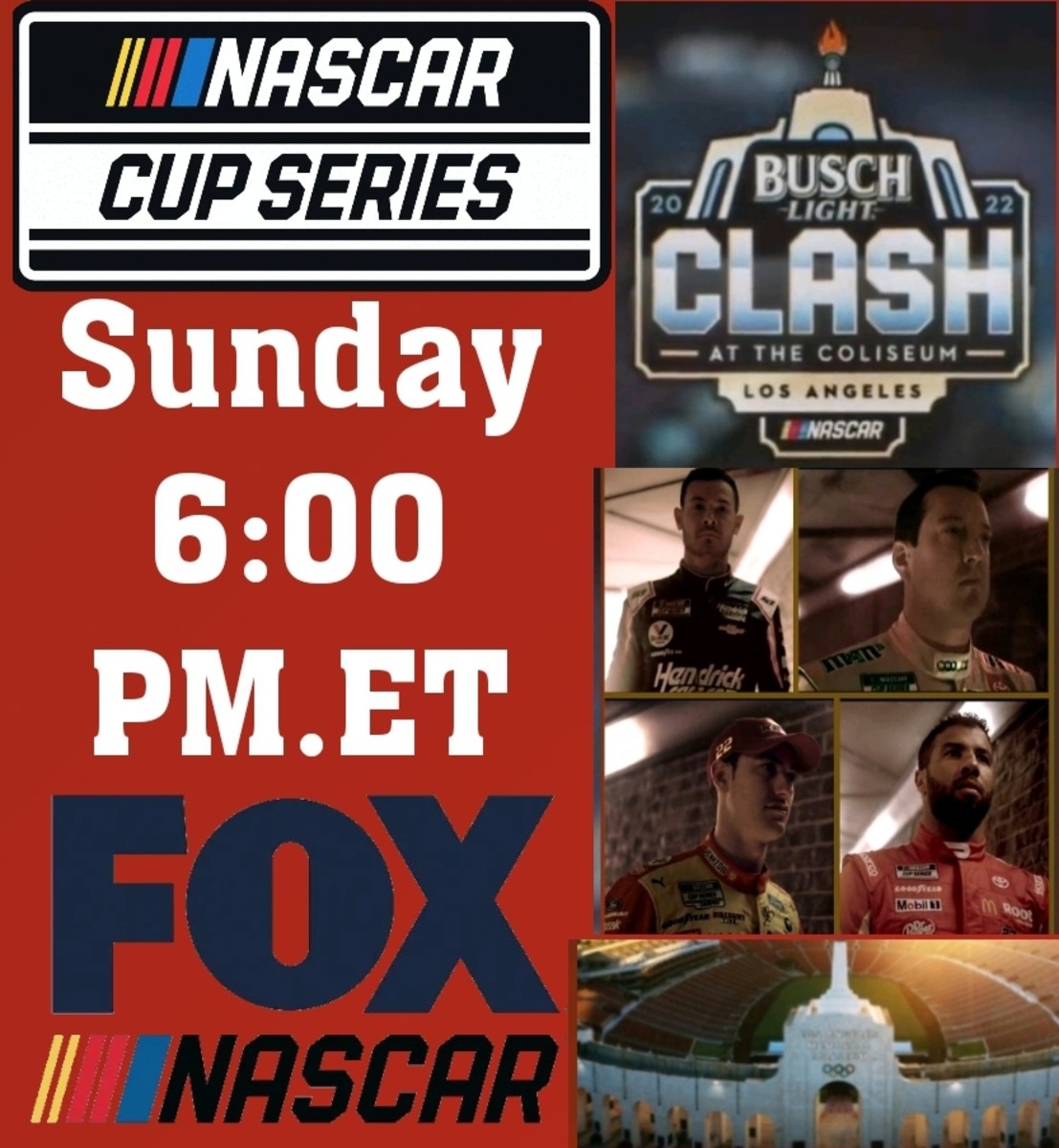
Such rumors make sense for two reasons:
1) NASCAR wouldn't spend seven figures plus for a one-off event.
2) The upcoming renovation of Auto Club Speedway in Fontana, California, roughly 50 miles east of The Coliseum. After hosting its upcoming NASCAR weekend Feb. 25-27, the two-mile superspeedway will be converted into a high-banked, half-mile short track that will essentially be a hybrid with high banks like Bristol Motor Speedway, and a tight racing surface -- particularly in the corners -- like Martinsville Speedway.
Expectations of the revamped facility are it will be ready by 2023 (most likely for the NASCAR Cup playoffs in the fall). This way, NASCAR can have two events in Southern California once again, at The Coliseum early in the season (to likely be part of the annual three-week "Western Swing"), and then the event at ACS in the fall during the 10-race playoffs.
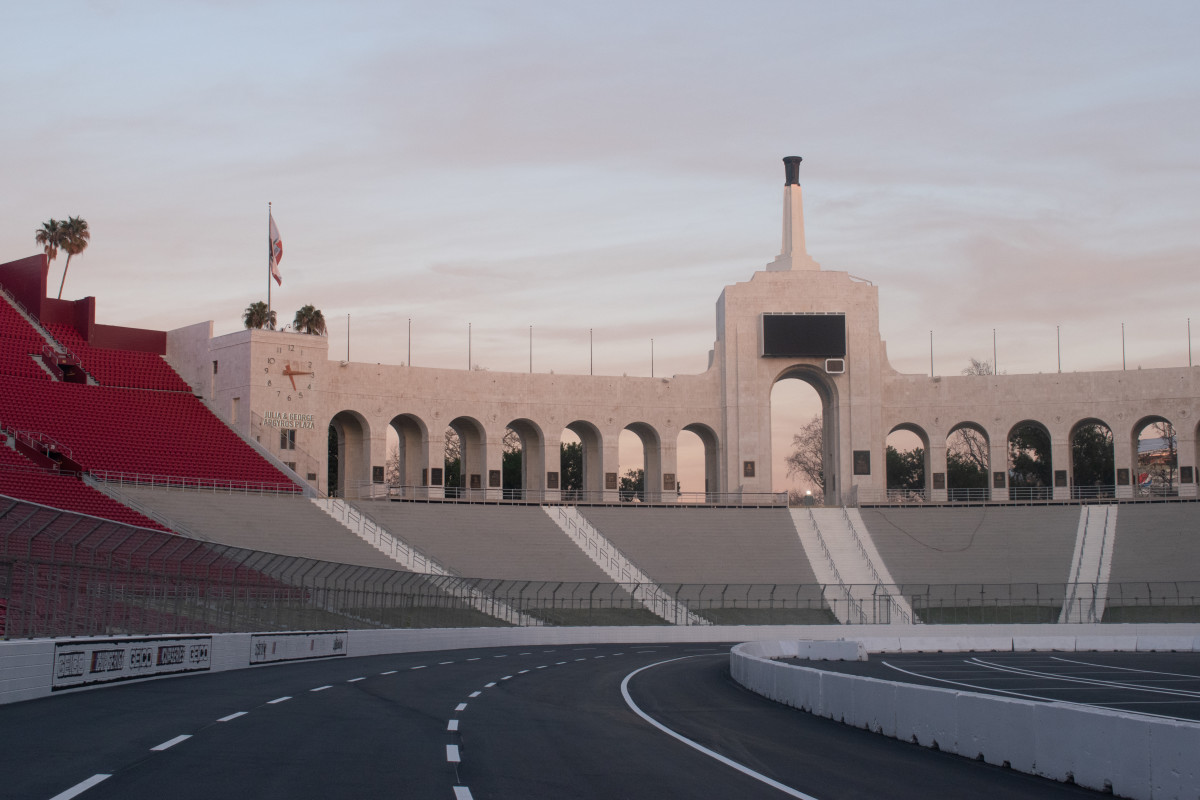
This will not be the first race held at a stadium. NASCAR held a number of in-stadium races primarily in the 1950s and into the 1960s before moving to other facilities designed exclusively for racing.
However, there are still at least a couple of stadium tracks that remain in the sport, hosting primarily Late Model racing, namely Bowman Gray Stadium in Winston-Salem, N.C., and Wall Stadium in New Jersey.
In fact, rumor has it that NASCAR chose Bowman Gray as somewhat of a model for the event at The Coliseum, as 17,000-seat Bowman Gray has sellouts on many of its weekly races -- and fans love the tight, close action.
The Coliseum has long been the home of USC’s (University of Southern California) football program, and it has hosted numerous major events since opening in 1932.
Among those events: the Summer Olympics in 1932 and 1984, and will do so again in 2028. It hosted the 1959 World Series and Super Bowl I and VII. The Rolling Stones, Bruce Springsteen, U2, Motley Crue and Kayne West are a handful of the musical acts that have performed there.
The famous venue has even hosted some of the most influential figures in history. John F. Kennedy accepted the 1960 Democratic nomination there. Pope John Paul II held Mass there in 1987. Nelson Mandela made his first appearance in the United States there in 1990 just four months after being released from prison in South Africa for 27 years.
To put it simply: the Coliseum is a very iconic venue, and NASCAR fans should feel extremely honored that their sport has the chance to race there.
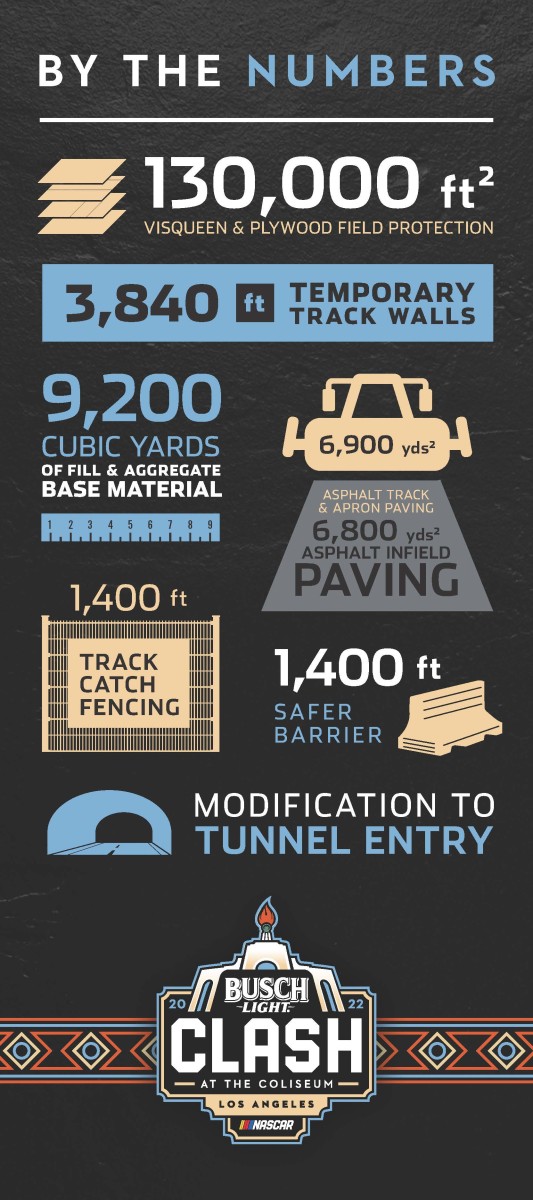
When NASCAR announced it was going to race at the Coliseum last September, many didn’t know what to think. Some thought the move was crazy. Others called it genius. Many agreed it was gutsy, to say the least.
Call it whatever you want. The on-track action is yet to be seen, but NASCAR has certainly killed it in the promotion department. Sunday’s Clash will definitely be a spectacle, to say the least.
Just as the NFL invites well-known musical acts to perform at the Super Bowl halftime show, NASCAR has booked multiple acts to perform at The Clash.
Grammy-Award winning rapper Pitbull (who also is a co-owner of Trackhouse Racing) will perform a 45-minute prerace concert. Legendary rapper Ice Cube will perfom a half-time concert during the race’s stage break.
And in a unique first, world-renowned DJ Skee will perform during concert breaks. It could be argued that The Clash is really a music festival that takes breaks for a stock car race.
Los Angeles might not be the stereotypical market for a NASCAR race, and rap music is definitely not what most associate with the sport. When one thinks of NASCAR, they usually think of “good ole boys” racing down South and country music.
But the venue and musical acts could aren’t there to entertain the sport’s core audience. This weekend is aimed to hopefully attract new and future NASCAR fans.
The Coliseum has about 78,000 seats. The sanctioning body says it has already sold over 50,000 tickets for the event, and is hopeful late walk-ups will bring the total crowd to roughly 60,000.
NASCAR also said that more than 70 percent of ticket buyers had not purchased tickets for a series event before, meaning a great race could create new lifetime fans.
With the track being only a quarter-mile around, and virtually totally flat in the turns, racing is going to be tight and action should be constant. It's likely that very few -- if any -- of the cars entered in the race will emerge without at least some damage or paint transfer when it comes to beatin' and bangin' between rivals.
Another key element in Sunday's race is it will mark the official debut of NASCAR's Next Generation race car (Gen 7 for short).
The new car is unlike any NASCAR has ever raced, including smaller fuel cells, bigger and wider tires, 18-inch wheels, a new transaxle, and one of the most significant changes the sport has ever seen, namely, one lug hubs, which will replace arguably the last connection of racing from the start of NASCAR in 1949 to the present time: wheels attached with five lug nuts.
Instead, the one lug hub will be mounted in the center of each wheel, with tire changers using a new air gun that is twice as heavy as those formerly used.
While the one lug hub is new to NASCAR, it has been in use for many years in other forms of motorsports, particularly series like Formula One and sports car racing.
One other major change related to the hub is that pit crews will likely save up to two seconds of time on most pit stops because there will only be one lug instead of five per wheel, plus with the addition of new and smaller fuel cells in cars, fueling a car will also take less time.
Needless to say, teams have been working on refining their pit stop skills over the last several months. Now we'll see what they've learned and how they've adapted starting Sunday.
“All teams are going to be faced with the same challenges of sorting out a new car, so in a sense we all have to sort things out by opening day,” Mark Rushbrook, Ford Performance Motorsports' Global Director recently told Autoweek.com.
But don't be surprised if mistakes will still be made Sunday, given how revolutionary the new car is.
We won’t see how the on-track product fares until Sunday evening, but make no doubt about it, The Clash will have a collection of new viewers and attendees who will experience NASCAR for the first time.
Let’s hope for a great race.
Oh yes, and one more very important thing: NASCAR couldn't ask for a better day weather-wise, as the forecast calls for 78-degree temperatures at the start of the race and zero percent chance of precipitation.
Drivers, start your engines, indeed!
Contributing: Jerry Bonkowski
